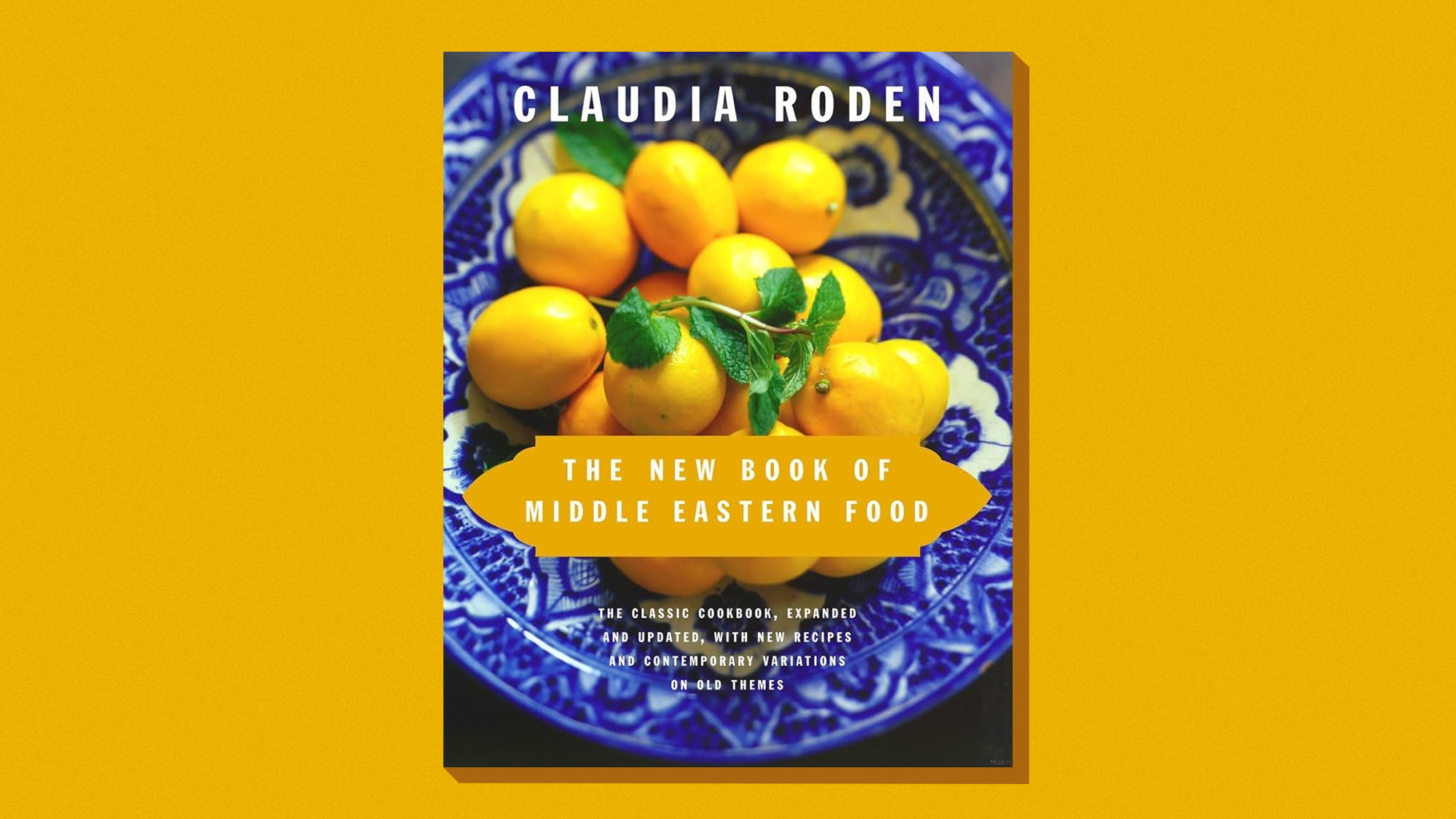One great cookbook: 'The New Book of Middle Eastern Food'
Where the academic and the practical coexist


Anyone who tries to capture the breadth of Middle Eastern cuisine usually spawns a bugbear. Claudia Roden, the preeminent scholar and cookbook author, instead inspired confidence and relief when she republished "The New Book of Middle Eastern Food" in 2000.
Roden debuted a version of the book in England in 1968, revised it for a second publication in 1985 and modified the text yet again on the cusp of the new millennium. That most recent edition, now 25 years old, remains a landmark text. You can read it as a scholarly plunge into the foodways and geopolitical maneuvering that shaped the countries of the Middle East, from Egypt to Turkey to Albania. You can wield it like a comprehensive 528-page road map to the cooking of those various countries. You would be wise to do both.
Holler for the scholar
The introduction to "The New Book of Middle Eastern Food" is a sprawling treatise on the movements and conquests that shaped the region and, this being a cookbook, its cuisines. Roden reminds the reader of the Arabic influence on, for example, Italy: "Sicily is famous for her granite and sorbetti (the Sicilian dialect term sciarbat is the Arab word for a sorbet)."
The Week
Escape your echo chamber. Get the facts behind the news, plus analysis from multiple perspectives.

Sign up for The Week's Free Newsletters
From our morning news briefing to a weekly Good News Newsletter, get the best of The Week delivered directly to your inbox.
From our morning news briefing to a weekly Good News Newsletter, get the best of The Week delivered directly to your inbox.
Roden's historical contextualizing continues across the recipe chapters. Mezze were "developed as a way of soaking up the drink arak." She then explains that what we know as mezze in the West from Lebanese and Turkish restaurants was "born in the mountain resorts in Lebanon where arak is produced, and in the old-style meyhane — the taverns or drinking horses of Istanbul." Could you savor a collection of mezze without knowing these details? Certainly. Does this stage-setting make those mezze all the more enticing? Absolutely.
Theme and delicious variation
Full-bore cooking covers the bulk of "The New Book of Middle Eastern Food," across 16 chapters. Grape leaves, served warm, stuffed with ground meat and rice and seasoned with tomato and cinnamon, include both a Lebanese and Greek variation.
This theme-and-variation approach occurs frequently across the book. A simple shakshouka with bell peppers, tomato and garlic presents a battery of optional tweaks, including the addition of preserved lemon peel, capers, harissa, sauteed onion or fried zucchini. It is a way to explore the concurrent sameness and difference of the cooking styles across the region's countries. Cook what suits your tastes; recruit what you already have in your pantry or fridge. "The New Book of Middle Eastern Food" feeds both belly and brain.
A free daily email with the biggest news stories of the day – and the best features from TheWeek.com
Scott Hocker is an award-winning freelance writer and editor at The Week Digital. He has written food, travel, culture and lifestyle stories for local, national and international publications for more than 20 years. Scott also has more than 15 years of experience creating, implementing and managing content initiatives while working across departments to grow companies. His most recent editorial post was as editor-in-chief of Liquor.com. Previously, he was the editor-in-chief of Tasting Table and a senior editor at San Francisco magazine.
-
 Political cartoons for January 3
Political cartoons for January 3Cartoons Saturday's political cartoons include citizen journalists, self-reflective AI, and Donald Trump's transparency
-
 Into the Woods: a ‘hypnotic’ production
Into the Woods: a ‘hypnotic’ productionThe Week Recommends Jordan Fein’s revival of the much-loved Stephen Sondheim musical is ‘sharp, propulsive and often very funny’
-
 ‘Let 2026 be a year of reckoning’
‘Let 2026 be a year of reckoning’Instant Opinion Opinion, comment and editorials of the day
-
 Doreen Williams-James’ prickly pear juice recipe
Doreen Williams-James’ prickly pear juice recipeThe Week Recommends Jewel-toned, natural juice is a thirst-quenching treat
-
 8 incredible destinations to visit in 2026
8 incredible destinations to visit in 2026The Week Recommends Now is the time to explore Botswana, Mongolia and Sardinia
-
 The 8 best comedy movies of 2025
The 8 best comedy movies of 2025the week recommends Filmmakers find laughs in both familiar set-ups and hopeless places
-
 The best drama TV series of 2025
The best drama TV series of 2025the week recommends From the horrors of death to the hive-mind apocalypse, TV is far from out of great ideas
-
 The most notable video games of 2025
The most notable video games of 2025The Week Recommends Download some of the year’s most highly acclaimed games
-
 The best food books of 2025
The best food books of 2025The Week Recommends From mouthwatering recipes to insightful essays, these colourful books will both inspire and entertain
-
 8 restaurants that are exactly what you need this winter
8 restaurants that are exactly what you need this winterThe Week Recommends Old standards and exciting newcomers alike
-
 7 bars with comforting cocktails and great hospitality
7 bars with comforting cocktails and great hospitalitythe week recommends Winter is a fine time for going out and drinking up
